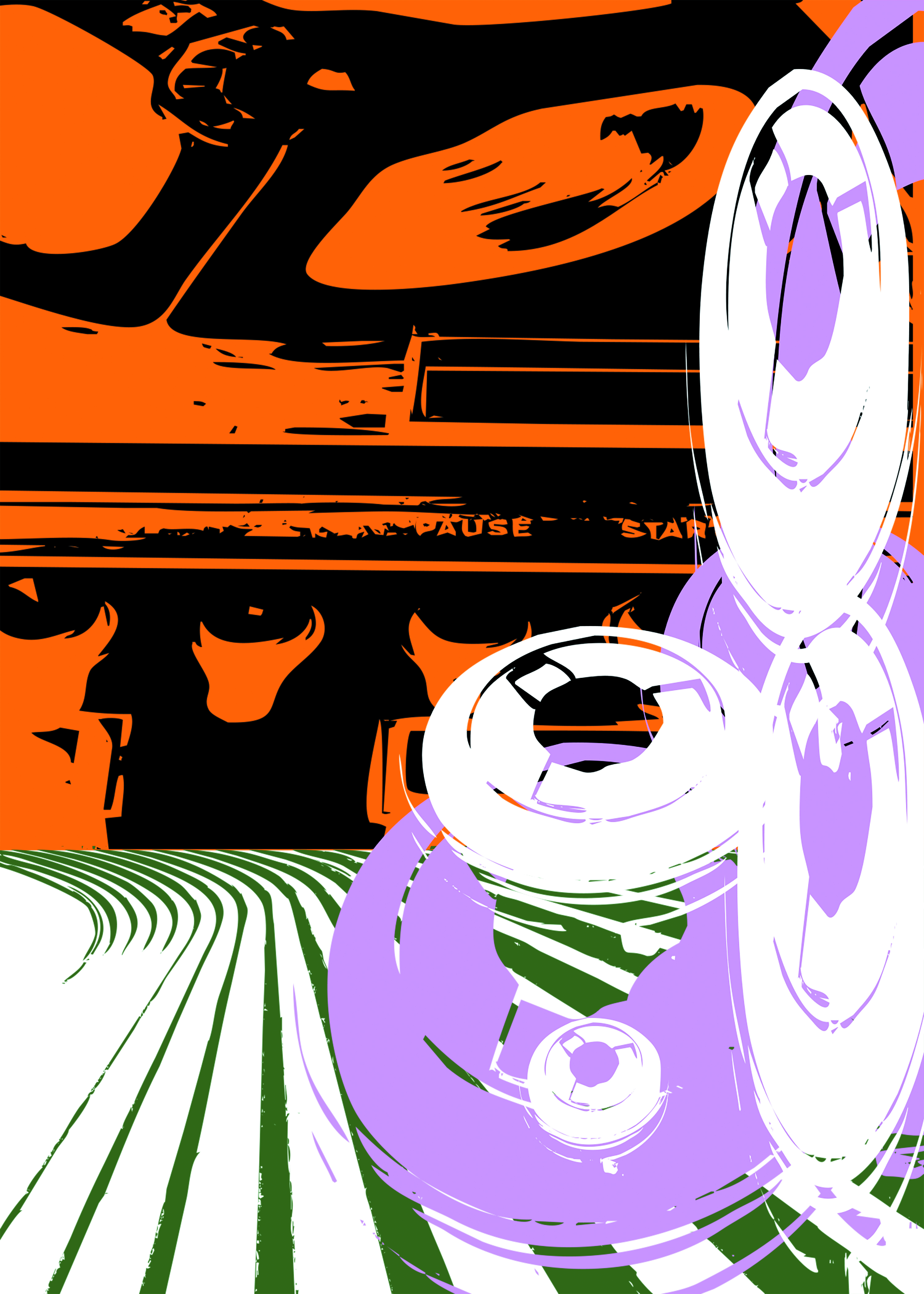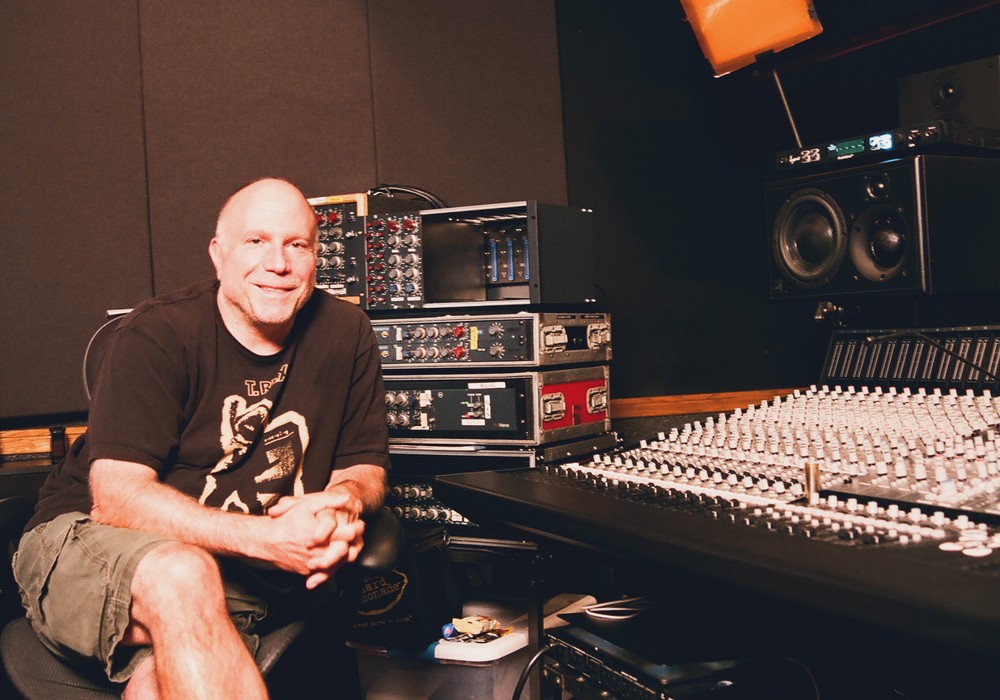I recently got an email from Matt Walton at Iron Age Audioworks, “Hey John I’ll be in the San Francisco Bay Area in a few weeks installing a console. Maybe we could meet up for a beer or coffee?” Installing a new console? I was intrigued, and so it was that a few weeks later I rode my bike over to meet up with Matt Walton and Fernando Romero of Iron Age, as well as with Walker Phillips, whose The Colourful Way studio is less than a mile from my house in San Rafael. After coffee and doughnuts, we went over to Walker’s studio (where he records his band Tabernacle @tabernaclesf among other projects) and I was able to see the console as it was being installed. The Colourful Way is an all analog studio – no computer – and Walker is running an 8-track Tascam 388 tape deck (with a 1-inch MCI machine going in soon), so a solid console is key to his workflow. Walker emailed me with a few thoughts on the new console after he had a chance to work with it for a few months; read below. -JB
"There’s some blank space on the center section, maybe you could sneak some edgewise meters in there?,” I said, somewhere between a joke and a dare. Within a couple of hours, the circuit diagrams and faceplate were updated, and the console had meters for the eight busses and the stereo output. That’s pretty indicative of the entire process of designing and building this Iron Age Audioworks console – over a cup of coffee, Matt and I could negotiate 40 revisions before noon on a Tuesday, and the suggestions weren’t always mine. Matt and Fernando lapped me several times with their ideas, many that I would never have thought possible.
When I set out to find a partner to build a console, I tried to keep my requirements dead simple – my 8-track tape workflow doesn’t require all that much, the consoles I was using as inspiration (custom, in-house designs like EMI or Sound Techniques) were relatively sparse compared to modern consoles, and – most of all – I didn’t want to intimidate a potential builder. I found out that I definitely couldn’t intimidate Iron Age. As the design progressed, the console hit all of my requirements, added new ones that I now find essential, and became something flexible enough that it could be integrated into the most demanding full-scale, modern studio without flinching.
Let’s talk features. Actually, hang on a sec. One of the best features of this console is the stunning visual design. Classic color combinations and an angled military/sci-fi/analog synthesizer-looking control surface. There’s also the gorgeous wood frame that was meticulously handcrafted. Check out Iron Age's Instagram for detailed photos and look closely at the faceplates – notice how the control sections are delicately separated, how the simple white and yellow print delineates functions, and how the channel features align perfectly with the aux, bus, and monitor features. The faceplate designs are clear, unique, and immediately intuitive. Truly a stunning feat of tasteful and practical design, with all the classic mojo a mid-century freak like me could hope for.
So, technical features: This console has 16 channels, 8 group busses, and a stereo bus. It is arranged in a split configuration with banks of 8 channels on either side, and a center section with aux/bus cards, as well as stereo master, talkback, and control room monitoring. Each channel has an Iron Age QPP mic pre, a sweepable high-pass filter (20 to 200 Hz), an Iron Age V2 three-band equalizer, four auxiliary sends (two of which are switchable pre/post), switchable insert, solo, mute, 100 mm fader, and pan knobs. All channels have direct outs and are assignable to any of the eight busses and stereo bus. Aux returns are also routable to the group busses and stereo bus. Group busses each have access to the four auxes. Best of all, the group busses can be assigned to the LR bus, allowing you to use them as stereo subgroups while mixing.
The control room monitor section has a large stereo level knob that can be fed from the stereo bus, two alternate stereo inputs, or the aux busses. Control room output can be assigned to any or all of three speaker pairs. Control room monitoring also features a dedicated solo level control, mono collapse, phase invert with collapse to mono (to hear channel differences), L/R swap, dim, and cut. The talkback mic has gain and level and can be routed via momentary switch to the auxes, busses, or both. Engaging talkback also dims the control room monitor level.
Direct outs, bus outs, aux outs, and stereo outs are transformer balanced. Naturally the transformers are custom tailored to provide a unique, lightly colored, spacious tone. Overall, I would describe this console as being on the clean side, and that’s by design. Since I work entirely on tape, I wanted low noise, high headroom, and clarity for my console. That’s not to say there isn’t color; there are dozens of custom-wound transformers and what seems like hundreds of their discrete M2 op amps – the console has a sound! To me it’s more of a fairy dust/glue/spacious quality that my previous [Tascam] 388 console did not provide. The preamps can offer loads of tone or beautiful natural sound when recording. I/O is primarily handled via balanced DB25 jacks on the back, which keeps cabling very tidy. At this point I should mention that pretty much all of this is a customizable design – from the mic pre to the EQ to the master features to the I/O configuration.
And now a deeper dive on channel features. The QPP is an incredibly versatile preamp. While it is very much in the style of a “clear, punchy American” preamp, the M2 op amps and transformers are intentionally designed to increase even-order harmonics, giving it a euphonic tube-like tonality while retaining the tight sound of a solid-state design. Eight of the channels have input transformers spec’d from a Wally Heider console. The difference is subtle, but these channels are slightly less present, with a bigger low-mid, making them more reminiscent of maybe a Neve or even a tube preamp.
The V2 EQ has been reviewed here before [Tape Op #147]. The first thing that stood out to me was the 5k (5 kHz) band. That 5k is a magic “better” function, and I can boost 12 dB before I even know it. It’s truly like nothing I’ve experienced with an EQ before. It’s all the good things we want in a presence frequency – like articulation and bite – but without ever sounding strident. To me, the upper mids and highs of the V2 recall the warm and sweet presence of a Trident A-Range console. The lows are deep yet focused, and very “solid-state” – the type of tone you’d expect to hear from an EMI TG console.
The flexibility of the routing on this console is easily my favorite feature. The aux and bus routing allows for incredibly complex combinations of effects and control while mixing. When connected to a patchbay, the combinations are nearly endless. Then there are all of these thoughtful little magic touches, like making the filter, EQ, and inserts switchable to allow for A/B comparisons, the band pass filter that is so perfect for electric guitars, peak indicators on channel and busses (honestly not that easy to hit them since there’s gobs of headroom, but one can get those peaks flashing and it still sounds great), and they even provisioned each channel with a meter circuit should I ever wish to add a full meter bridge.
That’s a mouthful, and I could go on. Thanks to Iron Age Audioworks for revolutionizing my studio, and I look forward to seeing what they do with the next console!





_disp_horizontal_bw.jpg)